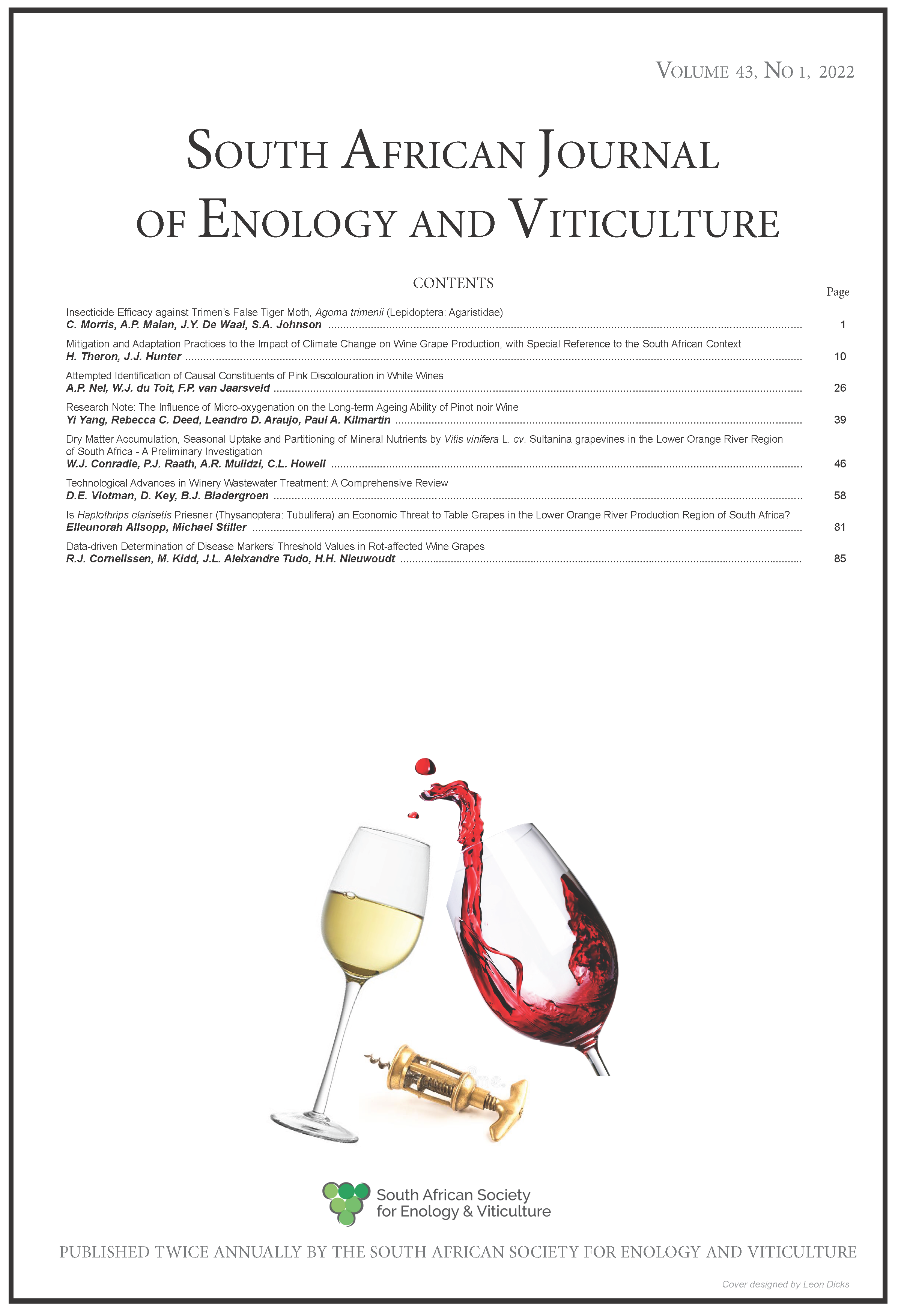Attempted Identification of Causal Constituents of Pink Discolouration in White Wines
DOI:
https://doi.org/10.21548/43-1-4812Abstract
The pinking phenomenon has been known in the wine world for the past 50 years. The phenomenon
occurs when a white wine turns pink under certain conditions. Since then, a Portuguese study found
malvidin-3-O-glucoside in Siria grapes making a connection to anthocyanin as the causing agent. Control
(K), naturally pinked (NP) and pink induced (PI) Sauvignon blanc wine samples were analysed by LCMS
and WineScanTM (Fourier Transform Infrared – FTIR) after Solid Phase Extraction. The monomeric
anthocyanins were analysed by a pH differential method, and CieLab was used to differentiate colour
differences between the control and pinked samples. It was found that malvidin-3-O-glucoside was below
the threshold values to facilitate pinking in Sauvignon blanc wines. Petunidin-3-O-glucoside showed a
slight peak in the LC-MS analysis, and together with the malvidin-3-O-glucoside, the potential to pink
the white wines increased. FTIR results showed that phenols and anthocyanins absorption could not be
distinguished and that there were possibly other compounds involved in the pinking of white wines. Analysis
by CieLab expressed the PI wines as a darker pink colour than the control wine and the absorbency value
at 500 nm was at least three times higher for PI than the control, showing the aggressive oxidative nature
of H2O2 on wine.
Downloads
Downloads
Published
Issue
Section
License
A copyright form will be e-mailed to the corresponding author when the manuscript has been accepted for publication.
In principle, the Author agrees to the following when he/she signes the copyright agreement:
I hereby assign to the SOUTH AFRICAN SOCIETY FOR ENOLOGY AND VITICULTURE (SASEV) the copyright of the text, tables, figures, supplementary material, illustrations and other information (the Material) submitted with the manuscript to be published in SOUTH AFRICAN JOURNAL OF ENOLOGY AND VITICULTURE (SAJEV) (the "Article"). The copyright becomes effective from the date the Article has been accepted for publication in SAJEV.
This is an open access journal, and the authors and journal should be properly acknowledged, when works are cited.
Author's may use the publishers version for teaching purposes, in books, theses, dissertations, conferences and conference papers.
A copy of the authors' publishers version may also be hosted on the following websites:
- Non-commercial personal webpage or blog.
- Institutional webpage.
- Authors Institutional Repository.
The following notice should accompany such a posting on the website: This is an electronic version of an article published in SAJEV, Volume XXX, number XXX, pages XXX - XXX, DOI. Authors should also supply a hyperlink to the original paper or indicate where the original paper (www.journals.ac.za/index.php/sajev/) may be found.
Authors publishers version, affiliated with the Stellenbosch University will be automatically deposited in the University's Institutional Repository SUNScholar.
Articles as a whole, may not be re-published with another journal.
The following license applies:
Attribution CC BY-NC-ND 4.0

